Friday Library Recommendations: Scary Books
With Halloween over half-term, I thought it would be the perfect time to share some spooky books that are best read when you wake up, rather than before going to sleep…
This Book Is Not A Bedtime Story by Eoin McLaughlin, illustrated by Robert Starling is a delightful twist on the traditional nighttime read. While the title boldly claims the opposite, this book is in fact perfect for snuggling up with before lights out.

The story is told from the point of view of a group of monsters who are convinced they are absolutely terrifying. They are determined to make the reader feel scared, setting scenes in spooky woods, creaky haunted houses, ghost ships and pitch-black caves. They use big voices, scary faces and all the tricks they can think of. However, it becomes clear very quickly that they are not scary at all. In fact, they are rather sweet.
I love the mix of gentle humour and clever subversion of expectations. The monsters, far from being fearsome, are adorably insecure. Their attempts to frighten are more funny than frightening, and children will enjoy being in on the joke. Adults will appreciate how the story gently explores feelings of self-doubt and the desire to fit in, all within a charming and accessible narrative.
The illustrations are bright and playful, perfectly matching the monsters’ silly personalities. Rob Starling does a brilliant job of bringing each character to life, making them more endearing than eerie.
By the end, the monsters are ready to give up scaring and simply settle down for a good night’s sleep. Funny, reassuring and heartwarming, this read that is ideal for bedtime, despite what the title says.
Next, I have chosen a book that will make you loud and scream in equal measure; Mallory Vayle and Maggoty Skull in The Beast From Beneath by Martin Howard, illustrated by Pete Williamson.
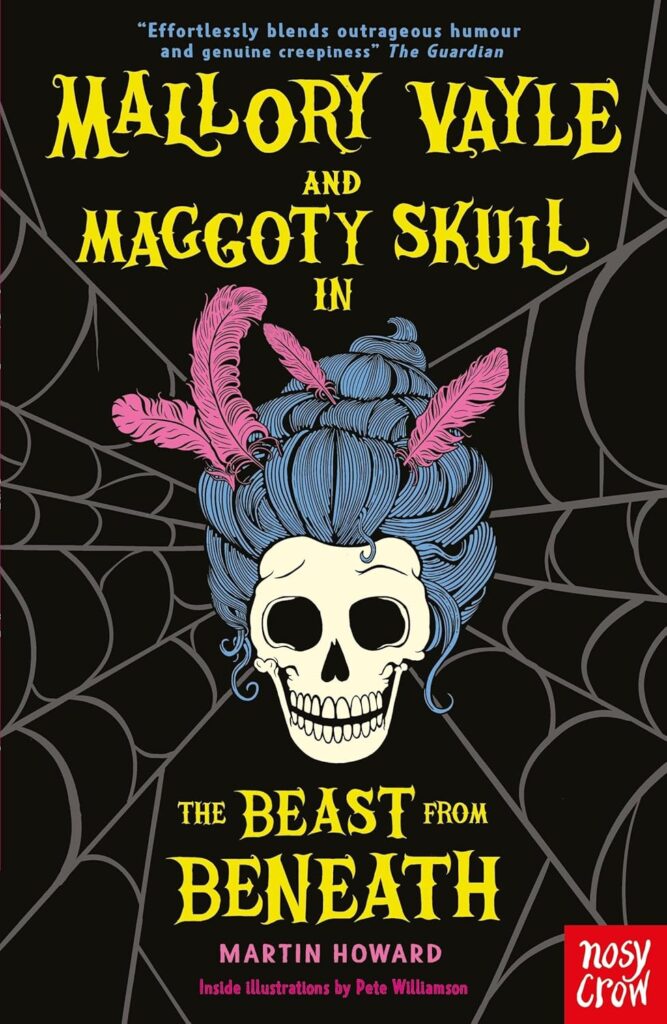
This fast-paced, laugh-out-loud adventure sees Mallory, a young necromancer-in-training, growing into her magical powers with the help (and occasional hindrance) of her chatty, wise-cracking skull companion, Maggoty. When a magical mishap at the hands of her overambitious Aunt Lilith unleashes a terrifying Nightmare creature, Mallory must venture into the depths of the creepy Carrion Castle to set things right. Along the way, she encounters ghosts, monsters, and even Death himself!
Packed with witty conversations, clever twists, and wonderfully gothic illustrations by Pete Williamson, this book strikes a brilliant balance between funny and frightful. While perfect for Halloween, its engaging characters and imaginative storyline make it a fun read at any time of year.
Ideal for confident readers in Key Stage 2 and above who enjoy humour, magic, and a touch of the macabre, with just enough scares to keep things exciting, but never too much for a primary school audience.
And finally, grab your cushion of comfort for my final choice; a compelling, claustrophobic read from Christopher Edge that will change a favourite childhood game forever. Fear Files: Hide And Seek is the first in a brand new horror-themed series packed with spine-tingling stories with a mysterious twist.

Presented as part of a secretive database called “The Darkive”, the story is framed as a first-hand account of a terrifying, unexplained encounter – one of many creepy tales said to be backed up by real evidence. This clever concept adds an extra layer of suspense for curious young readers who enjoy a good mystery.
In this instalment, Adam and his best friend Sol are on a camping trip that takes a chilling turn when they stumble across an eerie, abandoned ghost town. When a strange game of hide and seek begins, they quickly realise something, or someone, is trying to find them… and it’s not part of the plan.
I have to be honest, as someone who isn’t a fan of horror (even books written for children terrify me) this had me gripped from beginning to end. I loved the addition of clues, encyclopedia entries, newspaper cuttings, photos and floor plans that made me feel part of the team, investigating the eerie events.
Full of tension, atmospheric writing, and just the right level of fear for our oldest primary school readers, Hide and Seek is perfect for children who enjoy a thrillingly original good scare.
Happy reading, and don’t have nightmares!
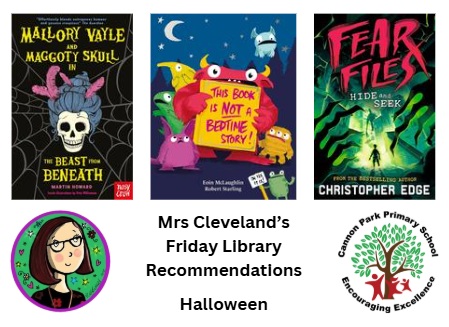
Wellbeing Wednesday: Thoughtfulness
Tips for wellness from our Mental Health In Schools Team

“If you see someone without a smile, give them one of yours.” – Dolly Parton
Thoughtfulness
Being thoughtful is when you consider, or think about, how your actions and words will affect other people’s feelings. Taking the time to make ourselves aware of the needs and feelings of others and then taking action to help them is great for our mental health; it helps reduce stress, improve friendships and creates a sense of belonging.
When we think about how others feel and show kindness, it makes us feel good inside and boosts our confidence!
Our tips for Thoughtfulness:
You can be thoughtful through small acts of kindness; it doesn’t have to be a grand gesture! Here are some examples below:
- Smile at someone.
- Listen carefully when someone is talking—it shows you care about what they’re saying.
- Give someone a nice compliment.
- Help out without being asked, like sharing your things or tidying up.
- Think about how others might feel before you act or say something.
- Hug someone you care about (e.g., parents/carers, family members or a friend).
- Hold the door open for the person behind you.
- Say kind things to others and try to cheer someone up if they’re feeling sad.
- Say “thank you” and “please”—small words can make a big difference.
- Tell someone that they are important to you.
For more information about the benefits of being kind and thoughtful to ourselves and others, follow this link to Newsround.
Please contact [email protected] for information and advice about mental health and well-being for your child and your family.
Friday Library Recommendations: Food
Tomorrow is World Food day, so what better way to celebrate than to sit down with a brilliant book, your favourite snacks and dig into food for the brain too!
My first choice is My Rice Is Best by Selina Brown, illustrated by Maxwell A. Oginni, a mesme-ricing celebration of food, culture and friendship!

The story follows Shane, a young boy who is absolutely certain that his favourite dish, rice and peas, is the best rice in the world. But when he brings it to school for lunch, his friend Yinka passionately argues that nothing can top her jollof rice. What begins as a friendly disagreement quickly turns into a light-hearted showdown, as the children try to determine whose rice reigns supreme.
Through playful banter and relatable lunchtime moments, this book introduces children to the rich diversity of foods enjoyed in different cultures. The illustrations are full of energy and warmth, capturing the characters’ expressions and emotions perfectly. It’s easy for young readers to see themselves in Shane and Yinka, whether they’ve had similar food debates or just love sharing their favourite meals.
I love how this book gently encourages curiosity about other cultures while celebrating children’s pride in their own backgrounds. The story opens the door to discussions about heritage, family traditions, and trying new foods, all in a way that’s accessible and fun for younger readers.
A celebration of the dishes that bring us together, and the friendly rivalries that make lunchtime a little more exciting, this book is perfect for promoting inclusion, empathy, and a love of storytelling through everyday experiences.
Next, I’ve chosen a unique book offers something a little different: part storybook, part recipe collection, Lunch At 10 Pomegranate Street by Felicita Sala, is a beautifully illustrated picture book that celebrates the joy of cooking, sharing, and community.

Set in a charming apartment building, the story follows the residents of 10 Pomegranate Street as they prepare dishes from around the world in anticipation of a shared lunch. Each apartment reveals a new character and cuisine — from Mr Singh and his daughter stirring up a fragrant coconut dahl, to Maria expertly mashing avocados for her homemade guacamole. As lunchtime approaches, everyone brings their dish to the communal table, highlighting the beauty of diversity and togetherness through food.
I love that each resident’s story is accompanied by a simple, child-friendly recipe that young readers can try at home with an adult. The instructions are easy to follow, with wholesome ingredients and minimal fuss, making it a lovely way to introduce children to cooking and different cultural traditions.
Felicita Sala’s illustrations are rich and inviting, filled with warm colours and delightful details that draw children into each home. The book radiates a cosy, inclusive atmosphere that makes it perfect for autumn reading or any time you want to spark a conversation about food, culture, and kindness.
Lunch at 10 Pomegranate Street is a visual and sensory treat that invites families to cook, read, and connect.
And finally, I’ve picked Pizza Pete And The Perilous Potion by Carrie Sellon, illustrated by Sarah Horne, funny, heart-warming adventures with a sprinkle of magic.
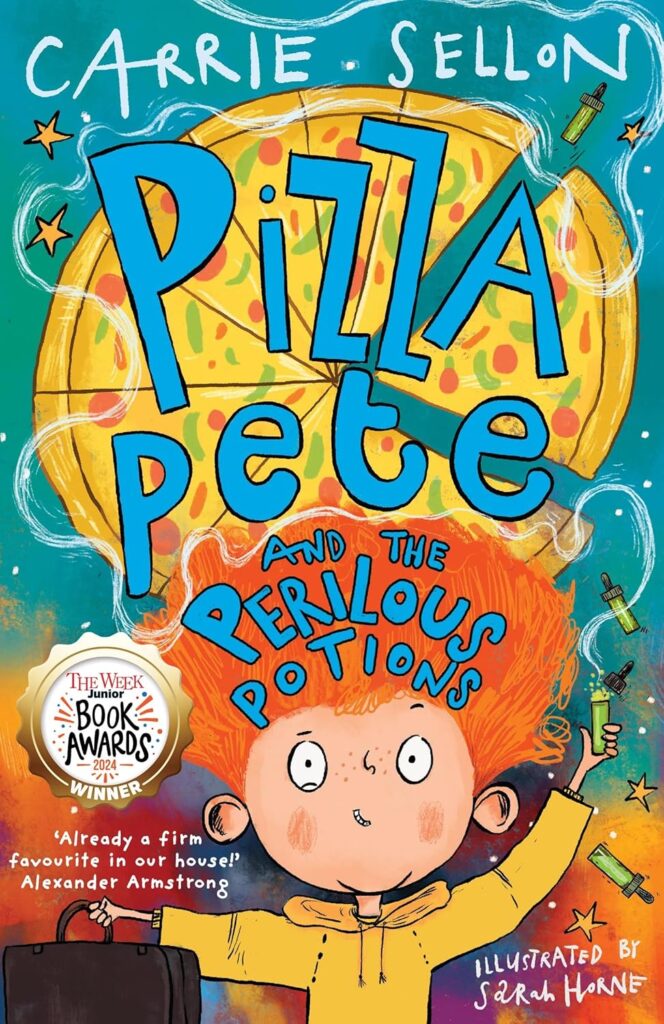
Pete lives happily above his dad’s pizza shop and has no intention of leaving home again. Something happened 25 days ago, that made him promise himself he would never go outside. But, when a fancy new restaurant opens nearby and starts attracting all their customers, Pete faces a difficult decision. With the family business at risk and the chance they might lose their home, he must decide whether to stay inside or step up to help.
Luckily, Pete’s friend Anna is full of ideas. Together, they come up with a clever plan. While exploring the attic, they discover a mysterious old briefcase that leads to the invention of magical pizzas. Soon, word spreads and a queue of excited customers begins to form down the road. But with only four days to save the shop, will their plan be enough?
This is a warm and funny story that blends real-life emotions with a touch of fantasy. It explores themes such as anxiety, bravery and friendship in a gentle and encouraging way. Pete is a relatable character for children who may feel nervous about change, and his story shows how small steps can lead to big achievements.
With a fast-moving plot, loveable characters and lots of imagination, Pizza Pete is a laugh out loud funny read that celebrates teamwork and creativity. A brilliant choice for independent readers or a fun book to enjoy together, especially for children who love stories with heart, and pizza. And with the third book in the series publishing just last week, there is plenty more to enjoy.
Happy reading!

Wellbeing Wednesday: Laughter
Tips for wellness from our Mental Health In Schools Team

“Laughter is the sun that drives winter from the human face.” – Victor Hugo
Laughter
Laughter is like a natural boost for your brain and body—it helps you feel happier, less stressed, and more relaxed. When you laugh, your body releases chemicals that make you feel good and even help you connect with friends. Laughter also helps to boost your immune system, helps you think more clearly and be more creative too. So, having fun and sharing a laugh is a great way to take care of your mental wellbeing!
Our tips for laughter:
- Keep note of your favourite memories — write down some of your favourite memories that have made you laugh the most and keep them in a jar. You can then pull one out and read them in the future. It can feel difficult to start laughing f you are feeling low, but a good place to begin is to remember what has made you laugh in the past.
- Spend time with friends who make you laugh — hanging out with funny, positive people lifts your mood.
- Watch or listen to funny shows, cartoons, or jokes — find things that make you smile or giggle.
- Don’t be afraid to be silly — make funny faces, play games, or be playful to invite laughter.
- Share jokes or funny stories with family or friends to spread the laughter around.
- Look for humour in everyday situations — try to find something to smile about, even on tough days.
Laughter is contagious…by laughing more, you will not only boost your own wellbeing but also the wellbeing of those around you!
Please contact [email protected] for information and advice about mental health and well-being for your child and your family.
Friday Library Recommendations: World Mental Health Day
Today is World Mental Health Day, so I have picked stories that we can all identify and empathise with.
My first choice is ish! by Peter H Brown, a beautifully simple and uplifting story that speaks straight to the hearts of young artists and their families.
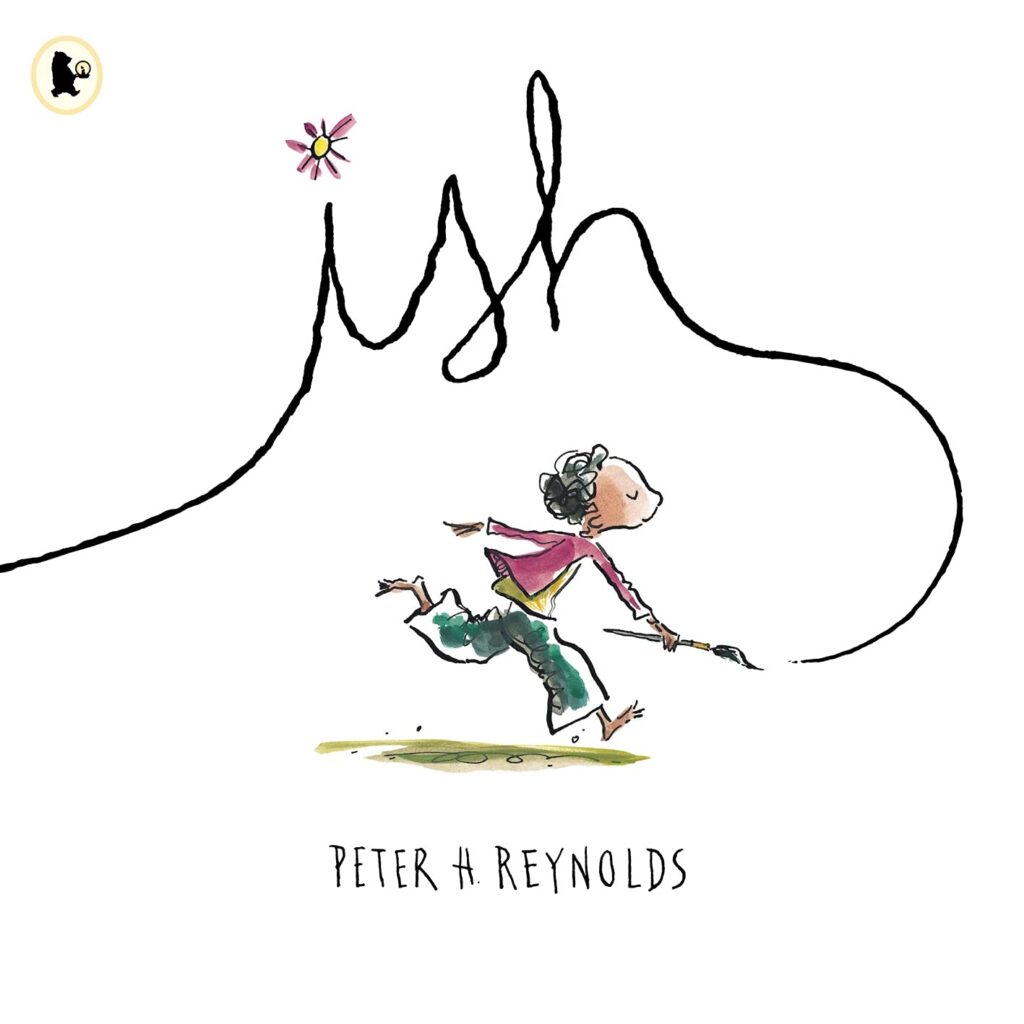
The book follows Ramon, a boy who absolutely loves to draw. He draws anything, anytime, anywhere, until one day, a careless comment from his older brother shakes his confidence. Suddenly, his once joyful hobby becomes a stressful task. Ramon’s drawings no longer feel “good enough”, and he begins to doubt his abilities.
But all is not lost. His younger sister Marisol gently shows him a different way of seeing things. She doesn’t focus on whether something looks exactly “right”. Instead, she appreciates the way his pictures feel. A vase doesn’t need to be perfect; it can be “vase-ish”. Through her eyes, Ramon learns that creative expression isn’t about perfection, it’s about capturing the essence of something and enjoying the process.
This heart-warming tale is a powerful reminder for children, and adults, that creativity is not about being exact, it’s about being you. With its minimal text and expressive illustrations, ish! encourages young readers to value their own unique way of creating and to keep going, even when self-doubt creeps in.
Offering a gentle but important message about resilience, self-expression, and the freedom to be “ish-ful”, it’s a great conversation starter for talking to children about confidence and creativity, and highly recommended for nurturing self-belief in budding artists and encouraging a lifelong love of making and imagining.
Next, I have picked The Wonderous Prune by Ellie Clements, a heartfelt and empowering story that blends everyday struggles with a touch of magical realism, perfect for readers who enjoy stories about family, friendship and finding your inner strength.

The story follows eleven-year-old Prune Robinson, who has just moved to a new town with her mum and older brother. Prune is quiet, thoughtful, and loves to draw, but things aren’t easy. She’s trying to adjust to a new school, where she’s being bullied, and her brother is constantly getting into trouble. Feeling like she needs to protect her already overworked single mum, Prune decides to keep her problems to herself.
Then something extraordinary happens: her drawings start coming to life. At first, Prune isn’t sure what to do with this strange and wondrous new ability. Should she keep it secret? Can she even control it? But when her brother finds himself in serious danger, Prune realises that her gift might be the key to saving him, and to holding her family together.
Ellie writes with warmth and insight, capturing the emotions of a young girl who feels invisible and overwhelmed. Prune’s magical ability is a clever metaphor for the hidden strengths children often carry, strengths that shine when they’re needed most. The story sensitively explores themes such as resilience, sibling relationships, bullying, the pressures of growing up, and the importance of speaking out when you need help.
With a relatable main character, a dash of magic, and a message about believing in yourself, The Wondrous Prune is both an entertaining and inspiring read.
Finally, for our oldest children, I’ve chosen All The Things That Could go Wrong by Stewart Foster, a powerful and moving story about friendship, empathy, and understanding others, even when they seem like the last person you’d ever get along with.
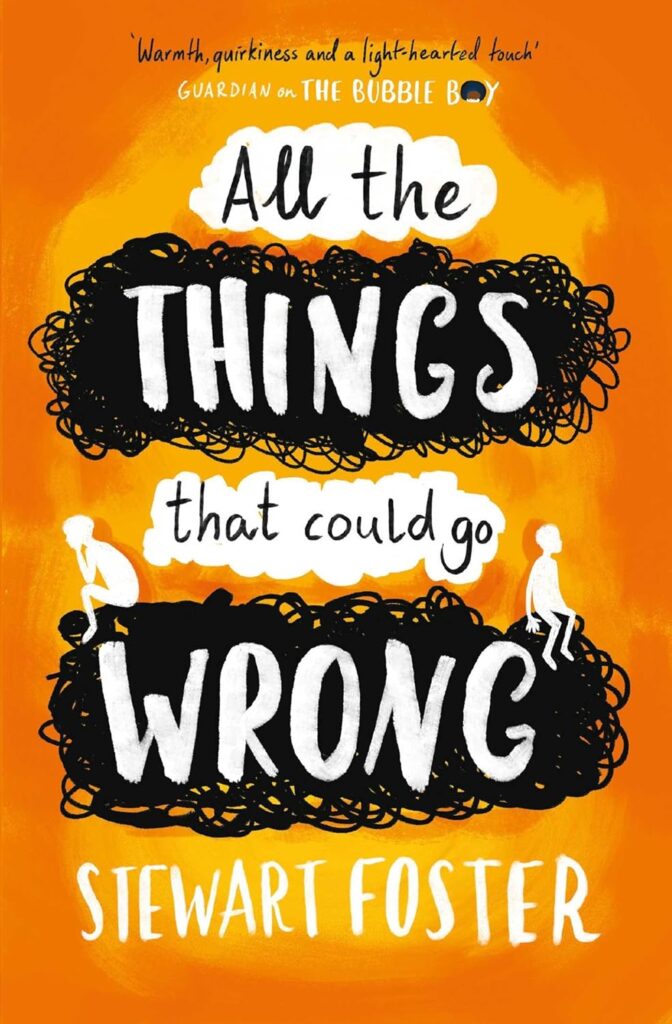
The story is told from the alternating perspectives of Dan and Alex, two boys with very different struggles. Dan is angry and lost after his older brother suddenly leaves home. Unable to process his emotions, he lashes out and begins bullying Alex. Alex, on the other hand, is dealing with severe OCD, which makes even getting to school a daily challenge, especially when he knows Dan and his mates will be waiting.
When their mums force them to spend the summer holidays together to finish building a raft Dan had started with his brother, both boys are horrified. But as the days go on, a reluctant truce begins to form. Through shared tasks, arguments, laughter, and the slow build of trust, both Dan and Alex begin to see that there are two sides to every story, and that friendship can sometimes grow in the most unexpected places.
Stewart handles difficult topics with great sensitivity and realism. The book explores mental health, grief, bullying, and family breakdowns in a way that is age-appropriate, honest, and deeply relatable. Both characters are well-rounded and believable, and readers will likely find themselves rooting for both of them by the end.
It opens up important conversations about kindness, mental health, and seeing beyond first impressions, making it a valuable read for both children and adults.
Happy reading!

Wellbeing Wednesday: Appreciation
Tips for wellness from our Mental Health In Schools Team

“Enjoy the little things, for one day you may look back and realize they were the big things.” – Robert Brault
Appreciation
Appreciation is a feeling of thankfulness or an act of recognising something that is important or meaningful to you.
We can appreciate or recognise another person through complementing them and sharing what you like about them. We can say ‘thank you’ to others when someone is helpful or supportive. This has benefits for both our mental health and for the people around us. We can also appreciate ourselves – you are important and unique! Remember to celebrate when you achieve big and small things and stop to appreciate what you have done.
Learning to appreciate others and ourselves can improve our self-esteem, improve our mood and improve our relationships with others.
Our tips for appreciation:
- Create a “be proud” board at home or at school where you post your drawings or good deeds.
- Start a gratitude journal – write or draw things that make you feel proud or happy every day.
- Give a compliment – think about a person who is important to you and tell them 3 things that you like about them. You could write a letter or a small note to let them know how much you appreciate them. Use these sentence starters to help you:
- I like how you…
- You are…
- Thank you for…
- You make me happy when you…
- Say ‘thank you’ – remember to thank other people throughout the day, to show them you appreciate what they do for you. If you have a friend who speaks another language, you could learn to say ‘thank you’ in the language that they speak. You could also learn to say ‘thank you’ in Makaton (sign language) too! Have a look at the video to help you!
- Self-appreciation – think of something small that you have achieved this week. Pause and take a minute to appreciate what you have done. Which of your positive qualities did you use? Kindness, thoughtfulness, curiosity, creativity?
Please contact [email protected] for information and advice about mental health and well-being for your child and your family.
